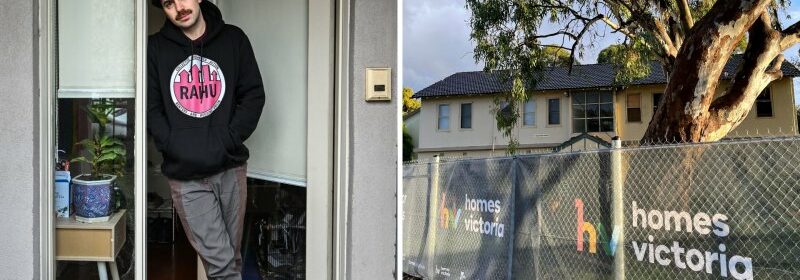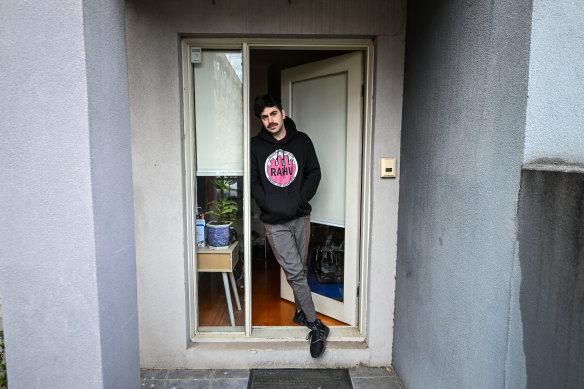Homelessness fears as Melbourne unit rents soar $90 per week in a year

Save articles for later
Add articles to your saved list and come back to them any time.
Key points
- Melbourne house rents have reached a record of $520 per week.
- Unit rents jumped 22 per cent to a record of $500 per week.
- Experts say the crisis shows little signs of abating.
Property listings
Melbourne unit rents have soared $90 per week over the past year, reaching a record high and pushing tenants away from their communities at the same time as other living costs continue to rise.
The asking rent for the median Melbourne unit has reached $500, the latest Domain Rent Report for the June quarter shows – up 4.2 per cent in three months and 22 per cent more expensive than a year ago.
For houses, the median asking rent jumped 13 per cent in a year to $520 per week – another record high.
The vacancy rate grew slightly over the June quarter to 1 per cent, up from 0.8 per cent in March.
Domain chief of research and economics Dr Nicola Powell said rents had increased for a record period of time because of high migration, low growth in housing stock and the pandemic-fuelled trend towards fewer people per household.
“For Melbourne it’s been such a change in events,” she said. “It’s the longest stretch that house and unit rents have been rising back-to-back. It’s seven quarters.”
Powell said landlords had recovered any loss in rents over the lockdown periods and were now asking for more money per week than ever before.
“We have about more than six months that have gone beyond that recoup period,” she said. “By the end of last year they had over-recouped what had been lost.”
The increases were particularly steep in Melbourne’s inner ring, where unit rents jumped 25.8 per cent in a year to a median $560, while the inner east rose 22 per cent and inner south rose 19 per cent.
Harry Milward has been evicted from his home and says it’s proved difficult to find a new rental in the same area because of the tight market. Credit: Justin McManus
Preston renter and Renters and Housing Union delegate Harry Millward had recently been given a notice to vacate by his landlord who was moving back into the property. Because of skyrocketing rents, Millward said he would be unable to find a new home in his area.
“We are scrambling around to find another place in the area because we really love it here,” the 34-year-old said. “But there are very few options that would be an equivalent price anywhere in Preston.
“So it looks like we’re going to be pushed further out of the city, further away from work and my community and I’m really upset about it. I feel stressed, under pressure and I feel like every other part of my life has become secondary to finding a place to live.”
Millward said the tight market was eroding living conditions for renters.
“If you’ve got a rental and it’s got mould, it’s got leaks, or it’s falling down, people are afraid to push back for their rights because they’re scared of retaliatory rent rises or evictions,” he said. “People are living in squalor to just have a small sense of security.”
Millward said governments should build public housing, restrict the use of short-term rentals and disincentivise investment in property altogether.
“Homes shouldn’t be an investment,” he said. “If everybody sold their [investment properties] then everybody would be able to afford their homes.”
Centre for Independent Studies chief economist Dr Peter Tulip said the record rise in rents was troubling.
“All the research tells us the main determinant of homelessness is the housing market and the average rents,” he said. “When rents are high, you get a bigger rate of homelessness and when rents are low, the rate of homelessness is smaller.
“This is just another reason why we need better housing policy on state and federal levels to make housing more affordable, which will especially benefit those at the bottom of the market.”
Tulip said there was little to suggest rent growth would slow or reverse in the short term, given forecast high migration and low construction completions.
“For generations, house prices have tended to increase a bit faster than other prices, about 2 per cent a year more than [inflation] for a long period of time. So under current policy there’s no reason to think that won’t continue.”
Tulip favoured increasing housing supply by removing planning red tape to speed up and ease the delivery of new housing stock; he did not support the large-scale construction of public housing or restricting holiday homes. Other economists have called for governments to build more social housing.
ANZ senior economist Adelaide Timbrell agreed the supply of homes was not keeping up with demand, which contributed to very low vacancy rates that pushed up rents.
“The combination of strong population growth and sluggish growth in the supply of housing in Australia is allowing investors to charge more for rentals,” she said.
Timbrell expected rent increases could slow as affordability constraints weigh on renter demand.
“Higher rents and deteriorating housing affordability tends to lead to differences in how people live. If people use less space or share homes among more people for affordability reasons, this will offset some of the increase in demand which is pushing rents up.”
Most Viewed in Property
Source: Read Full Article
